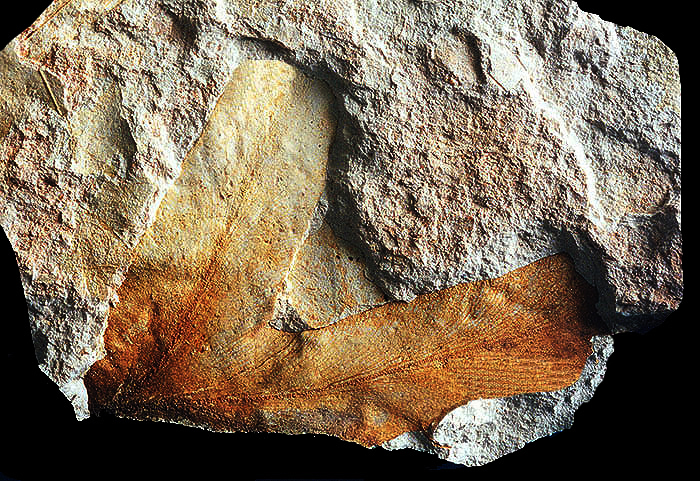
|
Here is a fossil climbing fern, called Lygodium kaulfussi, from the Middle Eocene Ione Formation, western foothills of the Sierra Nevada, California; reddish coloration is caused by iron oxide residues in the rocks. You are looking at two complete, intact lobes from what would have been, in all likelihood, a three-lobed specimen in actual life. Lygodium kaulfussi is most closely related to the living climbing fern, Lygodium palmatum, which is the only species of the genus Lygodium native to North America--it has been recorded from Mississippi, Alabama, and Georgia north through New England. The roughly 45 million-year-old specimen came from an extraordinarily rich locality on private property in Amador County--a specific site currently under formal paleobotanical study by Dr. Jack A. Wolfe (retired member of the United States Geological Survey) and Howard E. Schorn (retired Collections Manager of Fossil Plants at the University California Museum of Paleontology in Berkeley), among others, who hope to use the fossils to help approximate the paleoelevation of the ancestral Sierra Nevada region during the geologic past. Along with the Eocene Clarno Formation of Oregon, this specific fossil site yields the only known common to abundant Lygodium climbing fern fossils west of the Rocky Mountains region of the United States. Scattered, rare occurrences have been reported from a select few localities in California, but only those Lygodium specimens collected from the site under study in Amador County have found their way to a museum. Hence, the Lygodium fossils from the Amador County locality are the only known fossils of climbing fern, collected from California, presently residing in a museum. Please note: All fossil localities in the Ione Formation of Amador County, California, presently occur on private property; explicit permission from the land owners must be secured before collecting fossils there. |